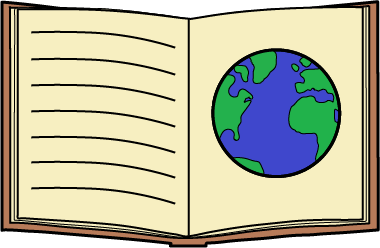
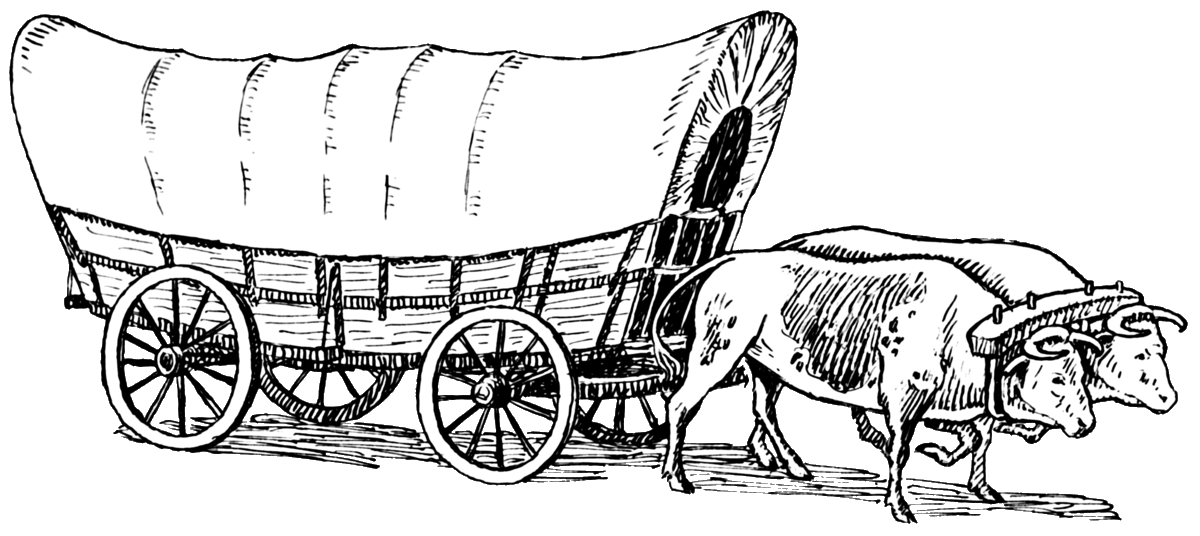
Oregon Territory fever swept across the country. In the 1840s thousands moved west. They would outfit themselves for traveling in wagon trains of 30 to 40 people. This meant that they would buy a wagon for a long trek across the country. They would usually also buy oxen to pull the wagon. They also bought supplies to carry with them. Missionaries spread news about Oregon. They said it was a good place to live. Robert Stuart found a route that would be good for pioneers to use. It would lead travelers over the Rocky Mountains through South Pass. The United States government helped promote the idea by promising to give people a square mile of land for almost nothing.

The government wanted people to go out and settle in the Oregon Territory so they could claim it as a territory. By 1846 there were six times as many Americans as British. A conflict was building between the United States and Britain. Both were claiming the Oregon Territory. The United States agreed with Britain to divide it between them along the forty-ninth parallel.
The trip to Oregon was challenging. It took about six months to complete. Each day travelers would go about 15 miles. Water became scarce during the hot summer months. Enough supplies were needed to travel 2,170 miles from Missouri to the Willamette Valley. Many pioneers got sick. There were many accidents. One could drown at the river crossings. A mule might kick you. An ox might step on your foot. Sheer determination got many through to Oregon.
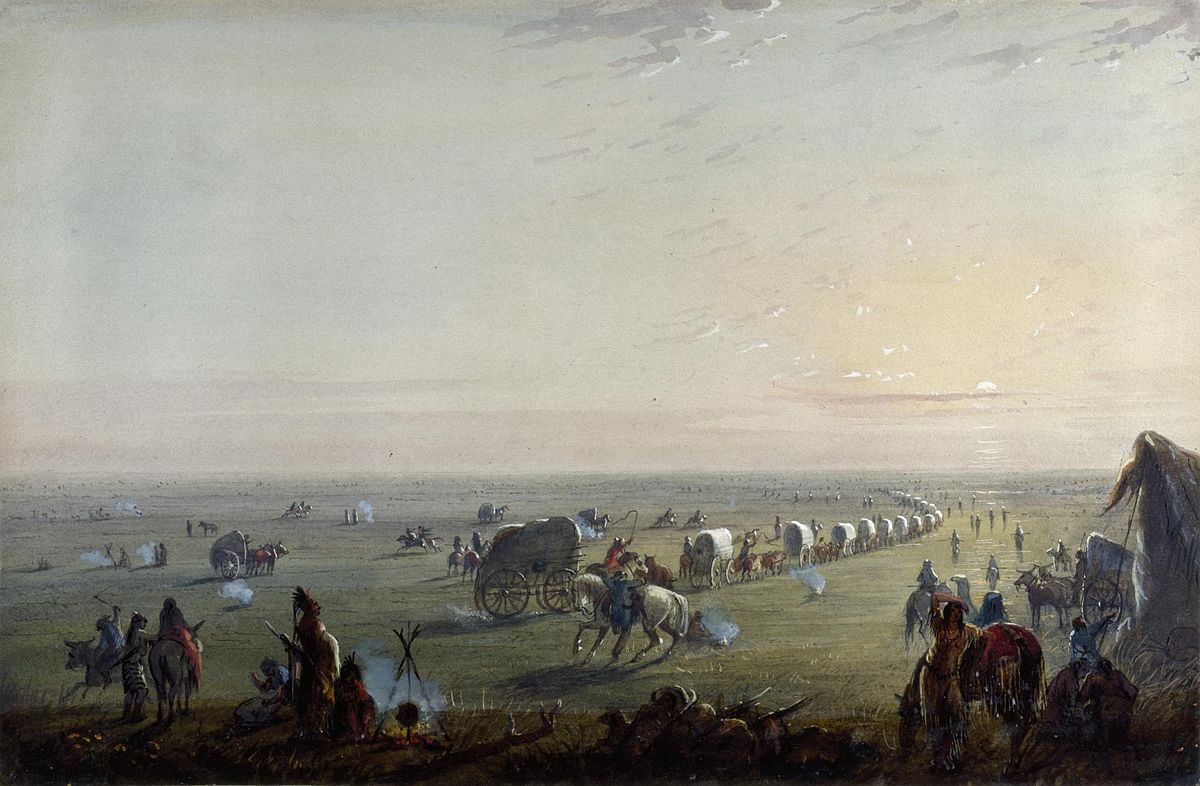
One of the worst sicknesses an Oregon pioneer could get was cholera. Even a healthy person could catch Cholera. A person could come down with a fever in the morning, be unconscious by noon, and then dead that night. Cholera was a silent killer.
It was important to not leave too early and not wait until it would be too late. If one left too early there would not be enough grass on the prairie to provide good feed for the cattle. Leaving too late risked getting caught in the snow and winter storms before arriving in Oregon.
Wagons carried pioneers across the plains. Murphy farm wagons were often used. They were not as heavy as the Conestoga wagons. A new wagon with needed parts would cost about $100. The size of wagons was usually 10 feet long by three and one-half feet wide. Canvas or osnaburg covers were stretched over hickory bows to protect travelers from the rain and sun. At deep rivers the wheels could be removed and the wagon boxes floated across. Wagons were called 'prairie schooners' because they looked like ships as they moved across the grassy plains. A schooner is a type of ship.
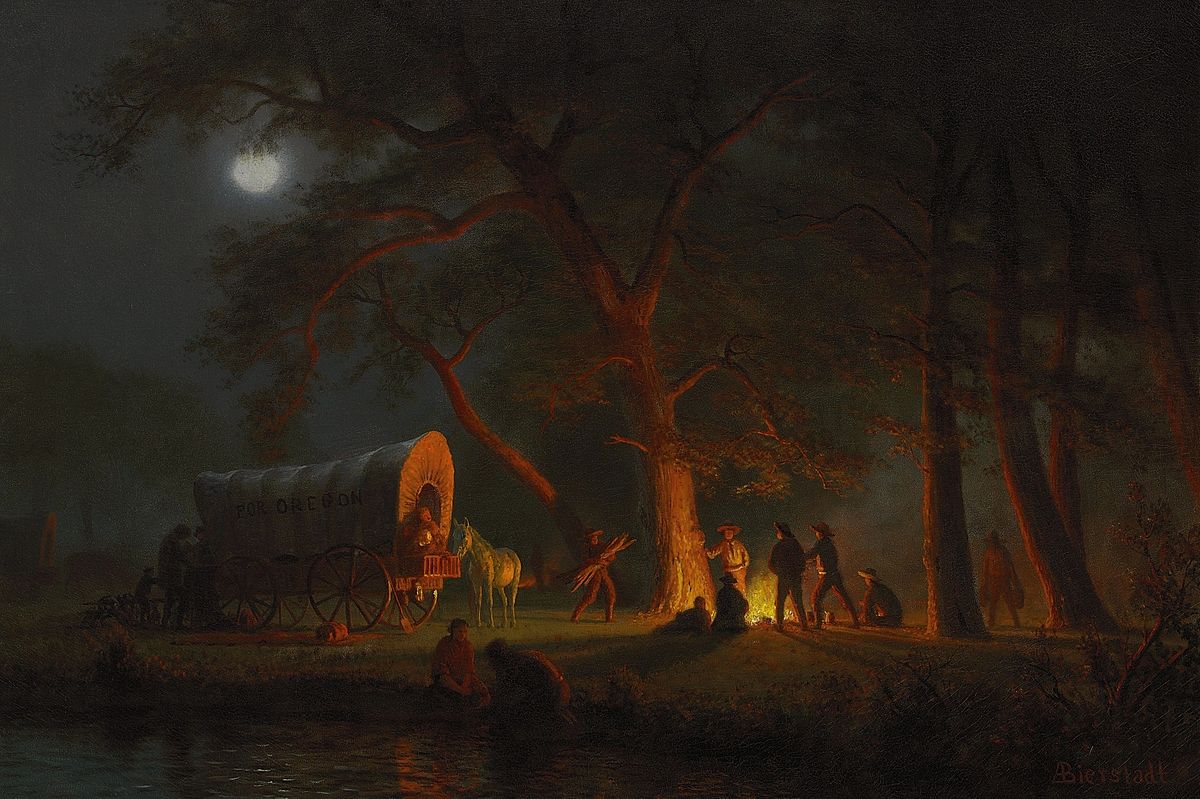
Oxen were the preferred draft animals because they were durable and gentle. But, they were also slow. Mules were also used. They traveled faster. Oxen could travel about 15 miles a day, mules could go about 20.
Some of the main foods they took were bacon, flour, and beans. Cooking was done outside over open fires. When fire wood could not be found they used dry manure or dung found near the trail.
They also often slept out in the open. Some would make beds in the wagons.
A day on the wagon-train trail started early and went until late. Before getting started on the trail, breakfast was prepared and eaten. Teams were yoked. Tents were folded and wagons loaded.
Pegleg Smith (Thomas Long Smith) was an interesting person along the Oregon Trail. For a time he lived near the shores of Bear Lake (Now on the Utah and Idaho border.). Pegleg Smith had a trading post that he ran along the Oregon Trail. It was a good place for a trading post because many supplies were needed by the pioneers. Vegetables and fresh animals were in high demand late in the year.
The steepest part of the Oregon Trail was down the side of the mountain to the north and east of the lake. Travelers would stick logs between the wheels to make it down the slope without crashing their wagons.
Peg leg was an interesting person. For years he was a fur trader. He had four Native American wives. He was a horse thief, hunted for gold for a time, and was a well-known liar. He also had a peg leg.
The story about his peg leg is that he got shot in the leg by an Indian. The leg got infected and had to be removed. It is said that he cut it off himself. Then he replaced it with a wood leg.

In the Applegate wagon train things started early. Rifles were fired at 4:00 am to wake people up, get fires started, and to make sure chores could be completed. At 7:00 am the wagons moved out. At noon the wagon train stopped for lunch. Oxen were turned loose with their yokes still on to graze and rest. At 1:00 pm they got back on the trail.
In the evening wagons were circled. Cattle were set out to graze, camp was set up, and meals were prepared and eaten. At night, fires and lights were put out early. Most then rested for another day. Circling of the wagons was done to create a corral to hold the animals securely during the night. Wagon tongues of one wagon were brought around behind the back of the next wagon.
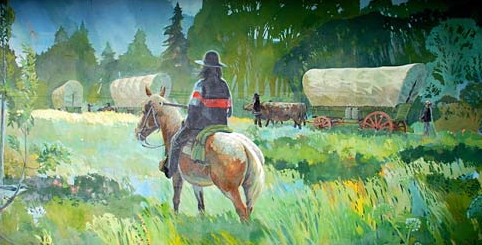
Early on there was little trouble with Native Americans. As more and more pioneers and travelers crossed the plains more troubles arose. It is estimated that before the California gold rush there were only 34 whites and 25 Indians killed in fighting on the Oregon Trail. More died from fighting as time went on. In 1860 the Utter wagon train was not so fortunate. That wagon train was attacked by Bannock Indians and only 14 of 44 travelers made it to Oregon.

At times wagons were lightened by unloading things. Crossing the Rocky Mountains was one of those times. As wagons went up mountain slopes the weight of the loads felt heavier. Many left unneeded furniture and baggage along the way.
Traveling the Oregon Trail was a long hard journey, but some 80,000 were drawn to travel it. They wanted to get a new start. They wanted to 'Go West.' They were willing to go through many trials in order to make a new home in Oregon. The Oregon Trail was an interesting part of westward expansion. America seemed destined to keep growing.

Text Credits:
http://www.ushistory.org/us/29b.asp;
http://www.blm.gov/or/oregontrail/history-basics.php;
http://www.historynet.com/oregon-trail;
https://www.wyomingtourism.org/things-to-do/detail/Independence-Rock-State-Historic-Site/2515;
https://familysearch.org/learn/wiki/en/Oregon_Trail (80,000 to Oregon);
Peg-leg Smith- Oregon Trail marker outside of Montpelier, Idaho and recollections by Steve (Griz) Hoge of Paris, Idaho, a Bear Lake old timer, story teller, and history buff;
Peg leg Smith- Thomas Long Smith at Wikipedia.com